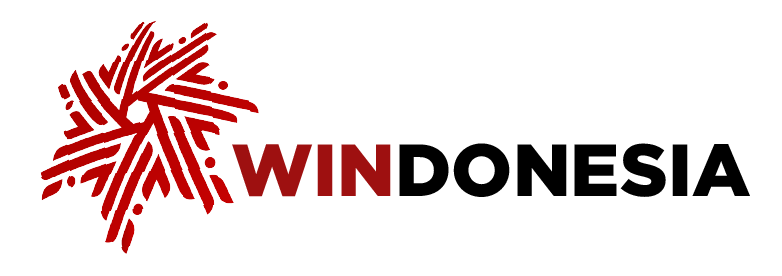News
Danantara: Investing for long-term or the President’s ambitions?
Tenggara Strategics August 5, 2025 A sign for sovereign wealth fund Danantara Indonesia is seen in front of its headquarters in Jakarta on Feb. 28. (Reuters/Willy Kurniawan) (Reuters/Willy Kurniawan)
A sign for sovereign wealth fund Danantara Indonesia is seen in front of its headquarters in Jakarta on Feb. 28. (Reuters/Willy Kurniawan) (Reuters/Willy Kurniawan)
Danantara has secured a staggering US$10 billion in unsecured credit lines from 11 foreign banks and $7 billion in equity investments from sovereign wealth funds (SWFs), a remarkable feat for an institution that is less than six months old. Yet its rapid rise raises an important question: Is Danantara truly operating as a SWF to secure long-term prosperity for future generations, or is it functioning as a super holding company to execute President Prabowo Subianto ’s ambitious programs?
DBS, HSBC, Standard Chartered, UOB and Natixis are reportedly among the foreign banks backing the credit line. Danantara CEO Rosan Roeslani, who is also the investment minister, framed the deal as a vote of confidence from global financial institutions, citing Danantara’s steady income stream from state-owned enterprise (SOE) dividends and investment returns. While the show of trust is notable, it raises another question: at what cost?
Rosan said the borrowing rate was comparable to that of government bonds, pointing to Danantara’s function as an SWF. The government’s 10-year government bond yield currently stands at 6.58 percent. This rate is barely competitive, even when compared to that of the world’s largest SWF, the Government Pension Fund Global of Norway, which posted a 6.34 percent annualized return between 1998 and 2024. If borrowing simply matches expected returns, what is the strategic merit of taking on such debt?
Unlike other SWFs that invest surplus national wealth, Danantara does not appear to have excess cash. While the government has pledged to inject $20 billion annually, this year’s widening fiscal deficit, partly due to weaker tax revenues, makes that promise difficult to fulfill.
Borrowing thus becomes essential. Danantara must cofinance equity investments totaling $6 billion, comprising $4 billion from the Qatar Investment Authority (QIA) and $2 billion from the China Investment Corporation (CIC), with another $1 billion commitment from the Russian Direct Investment Fund (RDIF). These investments require matching funds from Danantara to move forward.
A Reuters report suggests Danantara will draw $3 billion from the $10 billion credit line to coinvest with QIA and CIC in a $800 million chloralkali and ethylene dichloride plant by publicly listed petrochemical firm Chandra Asri Pacific (TPIA). While the project might seem sound, given TPIA’s performance, Danantara’s broader investment strategy remains opaque.
Currently, Danantara is reviewing proposals worth a combined $38.6 billion across 18 downstream projects, ranging from coal processing and agriculture to the energy transition and food security. These align with President Prabowo’s vision of industrializing Indonesia and generating jobs through downstreaming. But alignment with a political agenda does not guarantee long-term financial returns.
This year, Danantara is expected to receive $7 billion in SOE dividends, mostly from profitable state-owned banks. However, this revenue isn’t entirely investable. The government has tasked Danantara with rescuing struggling SOEs, including the near-bankrupt construction firms Waskita Karya (WSKT) and Wijaya Karya (WIKA), loss-making flag carrier Garuda Indonesia (GIAA), state pharmaceutical holding company Bio Farma and most recently, the heavily indebted Jakarta-Bandung high-speed rail (HSR) project.
The latter involves restructuring approximately $5 billion in debt held by PT Kereta Cepat Indonesia China (KCIC), the joint venture operating the Jakarta-Bandung HSR. The company’s growing debt burden has strained operations, with revenues reportedly insufficient to cover debt servicing.
Meanwhile, Danantara recently injected $400 million into Garuda to finance aircraft maintenance. Rosan acknowledged that many planes were grounded due to a lack of funds for repairs. The airline already received a Rp 7.5 trillion bailout in 2022, but has shown limited signs of sustained recovery.
Yet, it was Prabowo who personally instructed Danantara to fund the flag carrier, framing the bailout as a matter of Indonesia’s air sovereignty and national pride. Under a trade deal with United States President Donald Trump, Prabowo also committed Garuda, as well as Danantara, to import 50 Boeing 777s by 2032. Whether the airline can afford these purchases remains uncertain.
There is nothing inherently wrong with Danantara bailing out Garuda or KCIC or funding government development projects. However, Danantara must be clearly defined in terms of its function: whether it is a sovereign wealth fund or merely serving as an extension of the government’s development agenda. Either way, it must operate under clear principles, independent oversight and strict investment discipline to maintain its credibility and safeguard long-term national interests.
What we've heard
An internal source at KAI stated that Danantara’s intervention has become the only viable option to rescue Whoosh, which continues to be burdened by debt. One such measure involves transferring the Jakarta-Bandung high-speed rail infrastructure from PT KCIC to a new entity.

